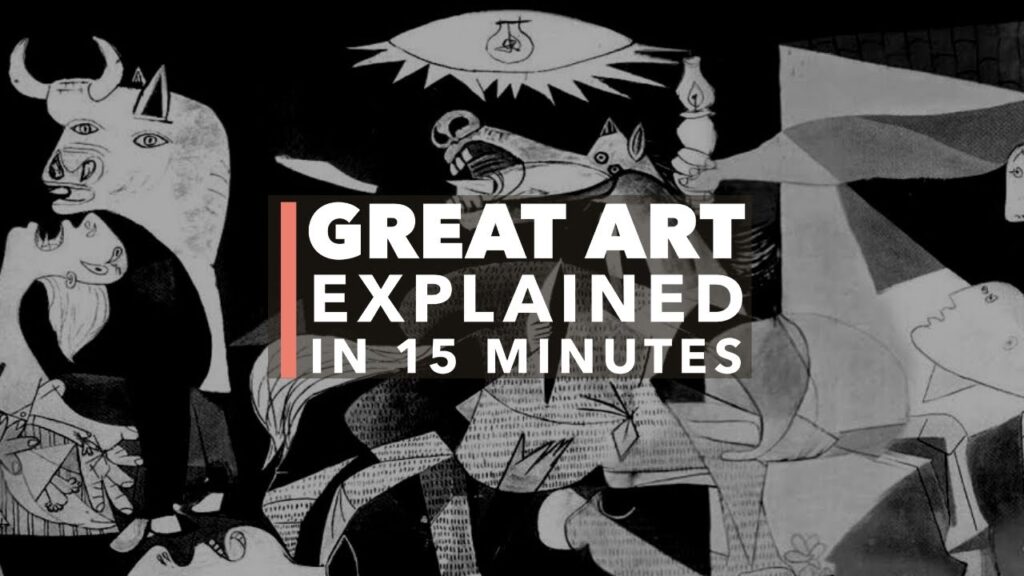
"In a famous sto­ry about Guer­ni­ca, Pablo Picasso's wrench­ing 1937 anti-war mur­al, a gestapo offi­cer barges into the painter's Paris stu­dio and asks, "did you do that?", to which Picas­so acer­bical­ly replies, "you did." The title refers to the 1937 bomb­ing of a Basque town dur­ing the Span­ish Civ­il War, car­ried out by Span­ish Nation­al­ists and the Luft­waffe. Whether or not the anec­dote about Picas­so and the Nazi ever hap­pened is unim­por­tant; it encap­su­lates the artist's dis­gust and out­rage over the atroc­i­ties of war and the takeover of his coun­try by Fran­co's Nation­al­ists, unyield­ing sen­ti­ments found not only in the paint­ing but also its path through the world."
""Guer­ni­ca had this real­ly unique rela­tion­ship with Picas­so and his life," says art his­to­ri­an Patri­cia Fail­ing. "In a way it was his alter ego." This is a bold claim con­sid­er­ing that dur­ing most of his career, "Picas­so gen­er­al­ly avoids pol­i­tics," notes PBS, "and dis­dains overt­ly polit­i­cal art." After the mural's exhi­bi­tion at the Span­ish Pavil­ion of the 1937 Paris World's Fair, how­ev­er, the paint­ing was sent on tours of Europe and North Amer­i­ca "to raise con­scious­ness about the threat of fas­cism.""
A painting evolves during creation and continues to change in meaning depending on viewers' states of mind. A famous anecdote about Guernica recounts a gestapo officer asking whether Picasso made the mural and the artist acidly replying, "you did." The title references the 1937 bombing of a Basque town by Spanish Nationalists and the Luftwaffe. The anecdote captures the artist's disgust and outrage at war and the Franco takeover, emotions present in the work and its global trajectory. Guernica developed a singular relationship with Picasso, sometimes described as his alter ego, even though Picasso usually avoided overt political art. After the 1937 Paris World's Fair exhibition, the mural toured Europe and North America to raise awareness about the threat of fascism. In 1939, after the fall of Madrid, the artist declared, "The painting will be turned over to the"
Read at Open Culture
Unable to calculate read time
Collection
[
|
...
]